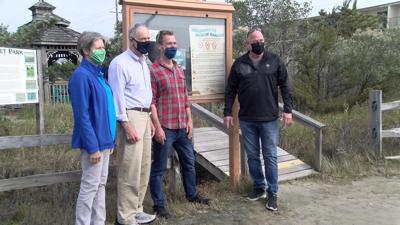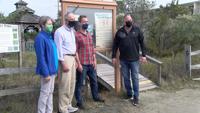DEWEY BEACH, Del.- Reducing flooding and improving water quality.
Delaware's Center for the Inland Bays and the town of Dewey Beach use greener and cost-effective options to protect Read Avenue from storm damage. It includes a three and a half foot high dune, layered rocks on a sloped bank, and an oyster reef.
Delaware Senator Tom Carper visited the site to learn more about how the coastline was constructed and what benefits come from it.
"While we address the root causes of rising sea levels, greenhouse gases, and climate change, it is important to address the symptoms like what we are seeing right here in Dewey Beach and up and down not just here on the beach but on the inland bays," Carper said.
The Center for the Inland Bays is looking to extend the living shoreline both ways. Science & Restoration Coordinator Dr. Marianne Walch says initial plans are in the works.
"We have developed a concept plan for that park that includes living shoreline work, work in the roadway to elevate it, and provide drainage," Walch said. "We are currently seeking funding to construct that project."
Delaware Center for the Inland Bays Executive Director Chris Bason says the effects that the greener options have over typical rocky barriers and drains are tremendous for the creatures and wildlife.
"This project created salt marsh," Bason said. "It created an oyster reef and that maintains the connection between the bay and those habitats which is essential for the fish, and the crabs, and the water quality."
Senator Carper says the issue of flooding is a statewide issue because Delaware is a low lying state. The Center for the Inland Bays will continue to help other communities looking to go green.
Calming threats to the people of Dewey Beach and the marine life they enjoy seeing out on the water.







